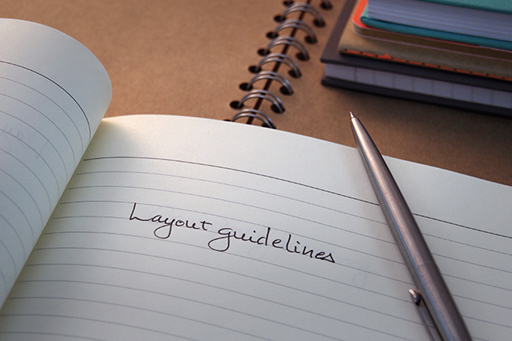6.3.3 Layout

To see how fiction layout works, check out the books on your bookshelf. Notice how the paragraphing and dialogue are formatted. This will give you a general idea but it is worth remembering that the work you submit to publishers and agents should be formatted slightly differently.
Here are some general guidelines (some of them might be superseded by specific formatting requirements requested by particular editors, publications or competitions – and some may differ in different countries; these are guidelines for the UK).
Besides helping you to produce readable, uncluttered manuscripts, this will get you into the habit of presenting your work as required by publishers and any critical readers who may offer feedback:
- Number your pages. This is normal, professional practice and makes it easier for your reader to refer to particular points when giving feedback.
- Set margins at each side of at least 3 cm (in most cases, this is the default setting).
- Don’t justify lines to the right-hand margin.
- Use double-line spacing.
- Give your story a title.
- Use a 12-point standard serif font (i.e. Times New Roman or similar), especially when submitting paper copy. Some online submissions now require sans serif font (i.e. Arial).
- Generally, there should be no line space between paragraphs, except when a line space between paragraphs is used to indicate a section break (i.e. a change of scene; a viewpoint switch; or some time has passed).
- The first line of the next paragraph following such a line space should not be indented.
- Asterisks can be used to draw attention to a significant section break but shouldn’t be overused.
- The first line of every paragraph should be indented, with the exception of the first paragraph in each chapter or section.
Readers will have big problems and potentially get very confused if the layout isn’t clear. Before you get to the editing stage with your story, check that the format and layout of your piece is readable and that you have followed all the guidelines on layout.
View the layout PDF [Tip: hold Ctrl and click a link to open it in a new tab. (Hide tip)] , for an example of how the paragraphing in your stories should look.
